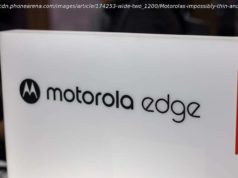The video game industry expo is quite the spectacle. I’m glad someone’s enjoying it.
It was about 34 minutes into the first press conference of the world’s biggest video game convention when I really began to have fun.
I’ve been making the trek to Los Angeles for the annual Electronic Entertainment Expo, or E3, for nearly a decade, so I’m used to hype-y press conferences with splashy demos on large screens accompanied by thumping music and loud explosions.
But when Patrick Söderlund, head of design at Electronic Arts, surprised the crowd with news that its latest small-scale artistic game, Unraveled Two, was being made available that day, the room roared.
«The game is finished, it’s out,» he said. The woman next to me was so excited, she began to cry. And I smiled.
I love being crammed into 410,000 square feet of convention center space with more than 69,000 other fans as eager as I am to see the 3,250 games, gadgets and toys on display.
Yeah, the lines are long, the food’s bad and the traffic around the Los Angeles Convention Center is insane. But entertainment in the right doses is good for the soul. And since video games have been entertaining me since I was a little kid, this is my type of show. E3 is an event where people geek out over an industry they love so much that this past week isn’t even the first time I’ve seen someone cry with joy over a video game. If you don’t find that endearing, you’re just missing out.
What made this year’s show even better was that it was only the second E3 in the show’s 24-year history that everyday fans could attend.
Until last year, E3 was just for industry insiders and media — an approach I didn’t get. It was especially confusing because the show is one of the most closely watched by fans around the world. Annual press conferences from Microsoft, Sony, Nintendo, Electronic Arts, Ubisoft and Bethesda Softworks are must-watch super-fan events chock-full of new game announcements.
This year, E3 seems to have found its calling. The 15,000 people who paid $249 apiece queued up to play the hottest games like Sony ‘s Spider-Man, for which the company hung a massive banner outside the conference hall to celebrate its planned September release. They gawked at the elaborate booths, like the one from Frontier Developments that replicated the iconic Jurassic Park (now World) gates, protective fencing and even a jeep to celebrate its upcoming Jurassic World Evolution theme park management game.
And, like me, they imagined playing the biggest new games. I walked in expecting to be most excited about games like Sony’s zombie epic The Last of Us Part 2 and Bethesda’s post-apocalyptic survival game Fallout 76. I was also excited to see the next Assassin’s Creed alternative-history game from Ubisoft, what Microsoft was going to do with its next installment for Halo and the demo of EA’s futuristic game streaming service.
What I didn’t expect was becoming addicted to the tongue-in-cheek Mario Tennis Aces, thanks to a surprisingly fun demo at Nintendo ‘s booth, where I kinda sorta held my own enough to get into it.
Karla Aleman, 19, attended with her 18-year-old brother, Rodolfo, who’s studying game design, as an early birthday present for him. They were standing in line to play Nintendo’s upcoming fighting game, Super Smash Bros. Ultimate, for a second time, after having stood in line for about a half hour to give it a whirl.
At first, she said, the crowds made her feel overwhelmed, but then she got excited to try games like Spider-Man and the upcoming Kingdom Hearts 3 .
«You get to test new games and meet a bunch of people,» she said.
Still, even with the show opening up the public, there’s a lot more to E3 than just the games. Which means there are parts of the show everyday gamers don’t get to see.
Here’s what caught my attention.
This game was everywhere. And I don’t mean advertising all over the place, or everyone playing it in the halls like they did with the Nintendo 3DS when that came out in 2011.
No, Fortnite had something better going for it: The game was in everyone’s heads.
There wasn’t a single conversation I had with video game executives in which Fortnite didn’t come up. Granted, I sometimes instigated it. But Fortnite just seemed to be everywhere. There were the announcements from Activision and EA that their respective Call of Duty: Black Ops 4 and Battlefield 5 games would borrow from Fortnite’s popular battle royale mode. There was the massive fan festival on Wednesday night with celebrities like comedian Joel McHale, NBA star Paul George, WWE wrestler Xavier Woods and big-name streamer Tyler «Ninja» Blevins. And there was Nintendo’s announcement that the game was launching on the Nintendo Switch console during the show.
It’s worth remembering, though, that the video game industry is full of fads. Several people I spoke with were quick to list those they’d seen before, like music games (remember Guitar Hero and Rock Band?) and collectible toys that interacted with games (like Activision’s Skylanders series, Disney ‘s Infinity and Warner Bros.’ Lego Dimensions).
Now we’re at battle royale. But make no mistake, this is a big trend.
Frank Azor, head of Dell ‘s Alienware gaming PC division, said he believes Fortnite is helping to push sales of his powerful computers up by a double-digit percent this year.
«It’s crossing into the mainstream,» Azor said of the game.
One of the biggest changes was the addition of metal detectors outside the convention center entrances and at each of the other events too. (It was generally just like TSA Pre-Check fast lanes at the airport for me.) While the increased security was a little jarring, it also wasn’t wholly surprising after a year of particularly disturbing shootings at schools and theaters.
«These just are the right steps to take in this world environment, and that’s on advice of the security professionals here in Los Angeles, the LA Police Department and others,» said Mike Gallagher, head of the Entertainment Software Association, the trade group that puts on E3. «We’ve invested an enormous amount to have that go as smoothly as possible.»
When everyday gamers were invited into the show last year, there was a lot of belly-aching from other attendees. The «green badges,» as these fans were derisively called because their name tags were colored differently from others, were suddenly being held responsible for everything from long lines to stolen equipment.






